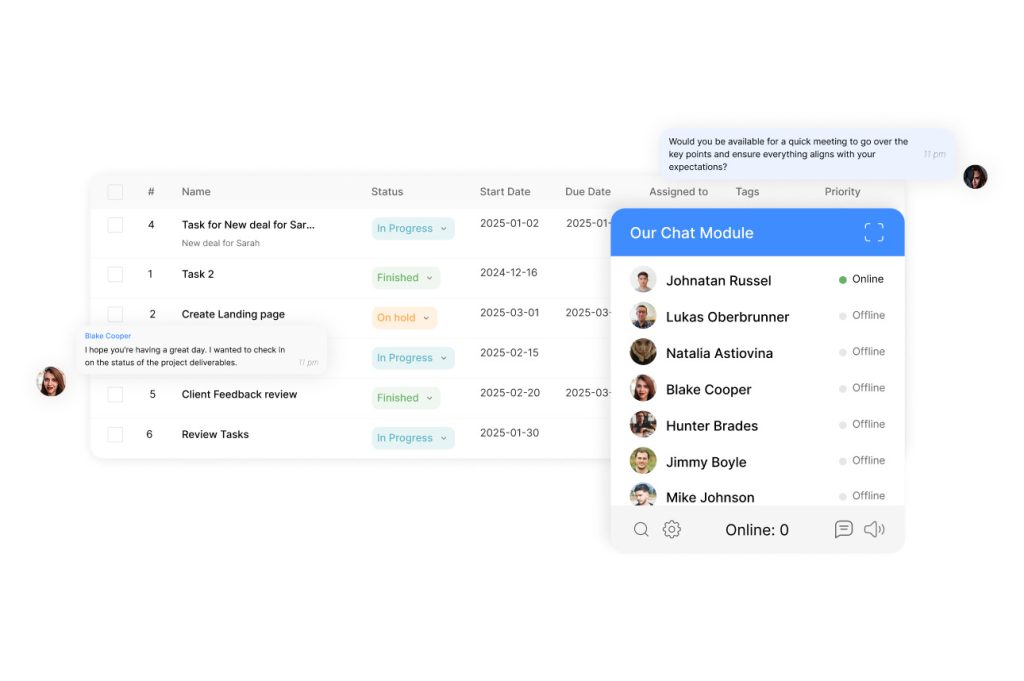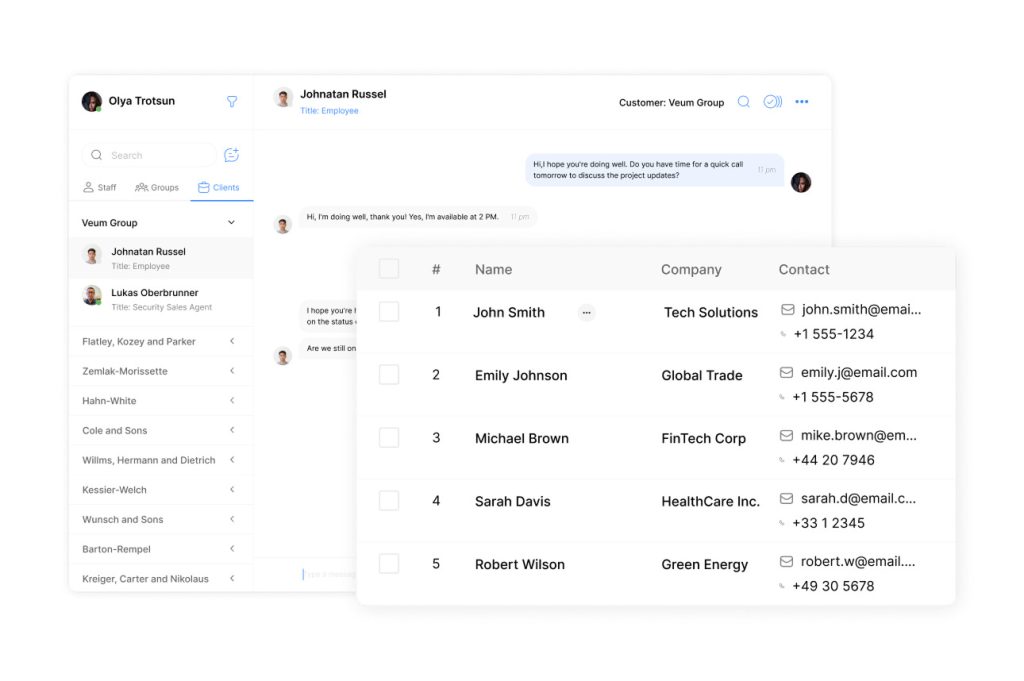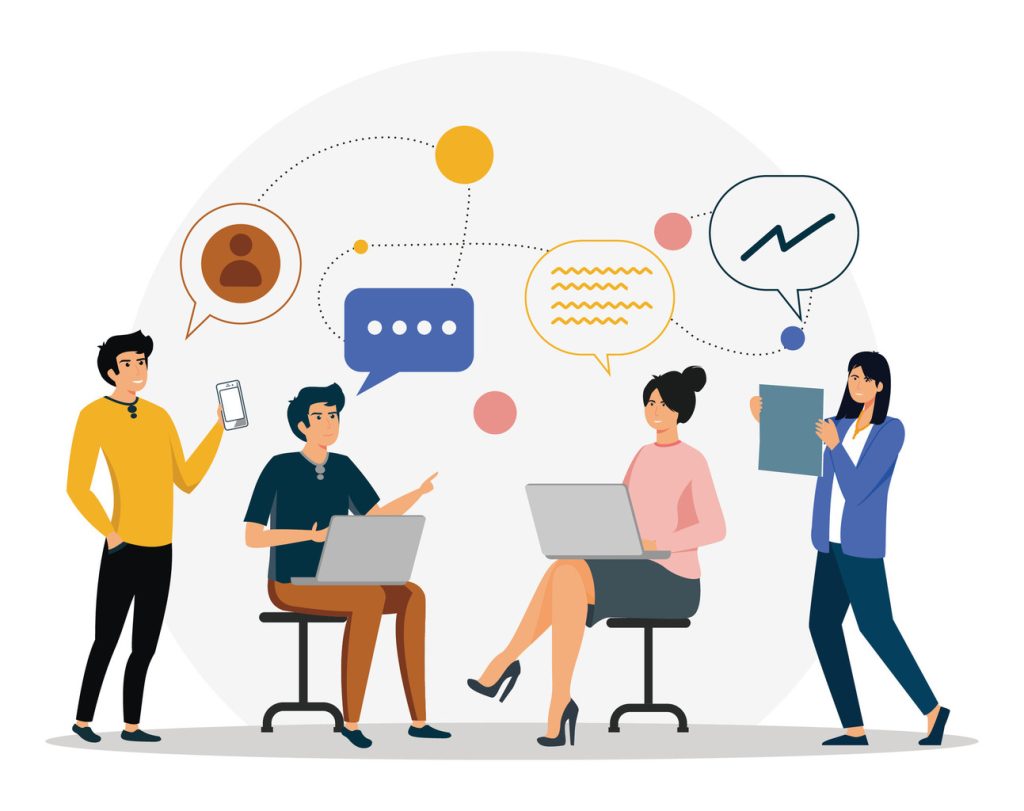Customer Chat Tools: Top Picks for Business Success

Real-time communication has become a cornerstone of modern business growth. Companies that prioritize instant, personalized support often see higher retention rates and stronger revenue streams. Live chat software, such as ClearCRM, bridges the gap between brands and their audiences, offering immediate assistance without phone queues or delayed email responses. As businesses continue to evolve, the demand for effective customer support remains paramount, making it essential for companies to invest in the right tools. In this context, evaluating solutions like the ‘best crm for customer support 2025‘ can provide insights into features that enhance customer interactions and foster loyalty. By leveraging advanced analytics and integration capabilities, businesses can tailor their services to meet the ever-changing expectations of their clients.
Integrating these tools into websites takes minutes, yet delivers measurable improvements in engagement. Startups and established organizations alike benefit from features like automated routing, CRM integrations, and performance analytics. Over 30 platforms were rigorously tested to identify solutions that balance advanced capabilities with intuitive design.
The best live chat systems adapt to diverse needs—whether handling high-volume inquiries or nurturing complex sales cycles. They eliminate friction for website visitors while giving teams actionable insights to refine service strategies. Affordable pricing models make professional-grade support accessible, leveling the playing field against larger competitors. Furthermore, these systems often provide the ability to customize your customer surveys, ensuring that businesses gather specific feedback tailored to their unique goals. By analyzing this feedback, companies can quickly identify areas for improvement and adapt their offerings to better meet customer needs. Ultimately, this responsiveness fosters loyalty and enhances the overall customer experience.
Key Takeaways
- Instant communication through live chat directly influences customer satisfaction and revenue growth
- Top-performing tools integrate smoothly with existing business workflows and CRMs
- Effective platforms provide analytics to track engagement metrics and agent performance
- Scalable pricing ensures companies pay only for features they actively use
- User-friendly interfaces reduce training time and accelerate implementation
- Advanced security protocols protect sensitive customer data during interactions
Understanding the Impact of Customer Chat
Immediate digital engagement now defines competitive service strategies. Businesses prioritizing real-time interactions gain measurable advantages in loyalty and conversion rates. This shift reflects evolving expectations: 77% of clients demand instant responses when reaching out to companies. To stay ahead, companies must integrate advanced technologies that facilitate efficient dealtocustomer connections, ensuring that every engagement is personalized and timely. As consumers become increasingly accustomed to immediacy, those who fail to adapt may find themselves falling behind in their industries. Ultimately, prioritizing these interactions not only drives customer satisfaction but also fosters a loyal customer base that values prompt service.
Modern Support Redefined
Live chat transforms how organizations handle inquiries. Unlike emails or phone calls, these tools create direct connections between users and agents through intuitive pop-up windows. A study shows 88% of buyers are more likely to repurchase after positive service experiences—a metric directly tied to response speed.
| Metric | Traditional Support | Live Chat |
|---|---|---|
| Average Response Time | 24-48 hours | Under 2 minutes |
| First-Contact Resolution | 34% | 63% |
| Client Satisfaction | 72% | 89% |
The Power of Instant Solutions
Real-time assistance converts uncertainty into action. When users receive immediate help during checkout or product research, cart abandonment rates drop by 28%. Teams using integrated platforms often see 40% faster ticket resolution, freeing resources for complex cases.
Forward-thinking companies combine these tools with CRM automation strategies, creating seamless workflows. This approach reduces repetitive tasks while maintaining personalized interactions at scale. By implementing these strategies, businesses can enhance their customer engagement, driving both sales and loyalty. Part of this success comes from mastering lead segmentation techniques, which allows companies to tailor their messaging and offers to specific audience segments. As a result, organizations can deliver more relevant experiences that resonate with their customers, ultimately leading to increased satisfaction and retention.
Top Customer Chat Software Picks for Modern Businesses

Selecting the right communication platform can transform how organizations connect with their audience. Five standout tools emerge from rigorous testing, each addressing distinct operational needs while maintaining intuitive interfaces.
LiveChat: Comprehensive Features for Immediate Impact
Starting at $24/month, this platform combines professional-grade tools with effortless setup. Message sneak peek and chat transfer capabilities empower teams to resolve issues faster. Asynchronous communication modes let users continue conversations across devices without losing context.
tawk.to: Zero-Cost Powerhouse
Businesses seeking unlimited users and customizable widgets find exceptional value here. Automated triggers reduce manual oversight while integrated knowledge bases address common queries instantly. Its free tier makes enterprise-level features accessible to startups and growing companies.
Specialized Solutions for Advanced Needs
Re:amaze ($29/month) delivers sophisticated automation through Cues and Workflows, streamlining complex interactions. Zendesk ($25/user/month) offers enterprise-ready ticketing systems with AI-driven insights. LiveAgent stands out with gamified performance tracking at $9/user/month, boosting team productivity through real-time metrics.
These applications demonstrate how modern live chat software adapts to diverse budgets and technical requirements. From free tiers to advanced AI integrations, businesses gain tailored solutions for measurable service improvements.
Key Features and Integrations in Live Chat Apps
Modern communication platforms thrive on intelligent capabilities that elevate user experiences while optimizing team workflows. Leading solutions now combine cutting-edge technology with adaptable architecture, creating systems that scale with business demands.
Automation, AI, and Advanced Support Options
AI-driven tools analyze conversation patterns to suggest responses aligned with company guidelines. Automated routing directs inquiries to specialized agents, reducing resolution times by 35% in tested environments. Workflow triggers initiate follow-up actions like ticket creation or satisfaction surveys without manual input.
| Feature | Impact | Platform Example |
|---|---|---|
| Predictive Analytics | 23% faster issue identification | LiveChat |
| Knowledge Base Sync | 41% fewer escalations | Zendesk |
| Sentiment Analysis | 17% higher satisfaction scores | Re:amaze |
CRM, Multichannel Chat, and Seamless Integrations
Unified dashboards merge interactions from social media, email, and SMS into single threads. Real-time CRM synchronization updates client profiles during conversations, enabling personalized solutions. Platforms like tawk.to demonstrate how Zapier integrations connect live chat data with 5,000+ business applications.
Critical infrastructure connections include:
- E-commerce platforms: Shopify order tracking during support discussions
- Marketing tools: HubSpot lead scoring based on chat behavior
- Payment systems: Stripe transaction verification within conversation windows
Evaluating Cost, Ease of Use, and Customer Support

Effective implementation hinges on both economic viability and intuitive design in support tools. Service platforms with transparent pricing and rapid deployment capabilities empower organizations to maximize operational efficiency. Most solutions now offer tiered plans starting at $20 per user monthly, with enterprise packages exceeding $100 for advanced features.
Pricing Structures and Affordability Insights
Free-tier options like tawk.to demonstrate robust functionality for startups, while scalable subscriptions suit growing teams. Total ownership costs extend beyond base fees—integration efforts and training time impact long-term value. Live chat applications with pay-as-you-grow models prevent overinvestment in unused capabilities.
User Experience and Quick Setup Benefits
Intuitive dashboards reduce onboarding time by 65% compared to legacy systems. Teams can deploy widgets within minutes using simple code snippets or CMS plugins. Service providers offering 24/7 technical assistance ensure smooth transitions during software adoption phases.
- Annual billing cycles often reduce costs by 18-22% versus monthly plans
- Prebuilt CRM connectors eliminate manual data entry for support teams
- Role-based access controls maintain security without complicating workflows
Enhancing Customer Service with Live Chat Tools
Operational efficiency separates industry leaders from competitors in today’s fast-paced digital marketplace. Live chat solutions streamline support processes by addressing two critical pain points: delayed responses and agent productivity bottlenecks. These platforms transform how teams engage with users, turning potential frustrations into loyalty-building moments.
Optimizing Response Speed and Workflow Capacity
Multi-conversation management lets representatives assist 5-8 users simultaneously without quality loss. This capability cuts per-query costs by 40% compared to phone systems. Intelligent queue distribution routes inquiries to specialists based on expertise, reducing resolution time by 32% in field tests.
Real-time dashboards display critical metrics like average wait duration and first-response rates. Supervisors use these insights to balance workloads and identify coaching opportunities. Proactive engagement triggers detect browsing patterns, offering assistance before users request help—a tactic shown to boost conversions by 19%.
Key operational improvements include:
- 57% shorter wait periods through automated prioritization
- 22% higher agent output via streamlined interface design
- 35% fewer repeat inquiries through instant knowledge base integration
These advancements create dual benefits: users receive faster solutions, while teams achieve more with existing resources. Service quality metrics typically improve within 30 days of implementation, with satisfaction scores rising by 18-25% across surveyed organizations.
Customer Chat: Leveraging Technology for Business Growth

Strategic deployment of communication technologies drives measurable business expansion. Advanced platforms convert routine interactions into growth opportunities through intelligent data utilization and targeted outreach.
Using Analytics and Reporting for Better Engagement
Top-tier systems generate granular performance reports tracking response times, resolution rates, and user satisfaction. These metrics identify bottlenecks in service workflows while highlighting top-performing agents. For example, platforms flag pages with prolonged visitor dwell times as prime locations for chat widget placement.
| Analytic Type | Business Impact | Implementation Example |
|---|---|---|
| Conversation Volume Trends | Optimizes staffing schedules | Peak hour staffing adjustments |
| Message Sentiment Analysis | Improves service quality | Agent coaching programs |
| Conversion Attribution | Boosts marketing ROI | Campaign effectiveness tracking |
Integrated dashboards merge chat data with CRM records, creating unified client profiles. Teams leverage these insights to refine training programs and update knowledge bases proactively.
Personalization and Proactive Messaging Strategies
Modern tools automatically reference past interactions when new conversations begin. This continuity builds rapport while reducing repetition for users. Behavioral triggers initiate outreach when visitors:
- View pricing pages multiple times
- Abandon carts with high-value items
- Spend over 3 minutes on FAQ sections
Automated workflows deliver tailored promotions or support options based on these actions. One e-commerce brand increased conversions by 31% using location-based offers triggered by IP analysis. Such strategies maintain human-like responsiveness at scale.
Platform extensibility ensures systems adapt as companies grow. Modular architectures support new integrations, from payment processors to AI translation services, without disrupting existing operations.
Conclusion
Modern enterprises face a pivotal choice in service delivery methods as client expectations evolve rapidly. Live chat software emerges as the backbone of competitive engagement strategies, driving measurable improvements across satisfaction metrics and operational workflows. These platforms turn brief interactions into loyalty-building opportunities through instant problem resolution.
The market offers solutions for every operational scale and budget. Startups gain access to enterprise-grade tools through flexible pricing models, while established brands optimize complex workflows with AI-enhanced capabilities. Success hinges on selecting platforms that align with specific business needs and growth timelines.
Adoption now serves as a market differentiator rather than an optional upgrade. Companies delaying implementation risk losing ground to agile competitors. Advanced systems blend automated efficiency with human insight, creating seamless experiences that convert inquiries into revenue.
Forward-thinking organizations prioritize platforms supporting continuous adaptation. As artificial intelligence reshapes service standards, the best software suites empower teams to deliver personalized care at scale. This strategic fusion of technology and expertise defines the next era of client relationship management.

